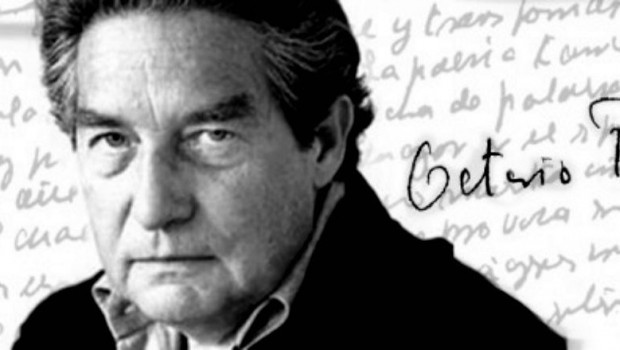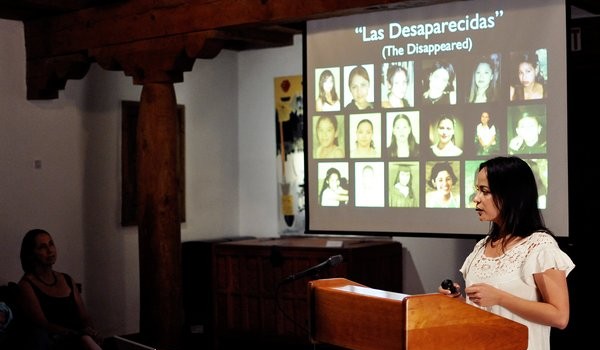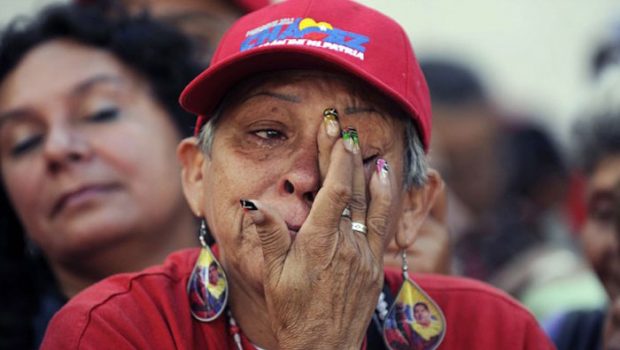Polemical Paz
Maarten van Delden
Octavio Paz was no stranger to controversy. The target of often harsh attacks by his enemies—in particular for his political view— Paz did not shy away from engaging in robust polemics himself. He clearly relished his role as a public intellectual and opinionmaker. Yet, in spite of the influence he wielded—in part through the two journals he edited, Plural (1971-1976) and Vuelta (1976- 1998)—the constant cultural and political warfare in which Paz was caught up often left him feeling isolated and misunderstood. Indeed, the passions aroused by Paz’s views frequently hindered a balanced assessment of his work. The recent publication of Claire Brewster’s Responding to Crisis in Contemporary Mexico: The Political Writings of Paz, Fuentes, Monsiváis, and Poniatowska proves that even with the passage of time misconceptions about Paz’s role in Mexican political debates persist. Brewster offers a highly detailed and frequently compelling discussion of the political writings of the four writers who have dominated intellectual life in Mexico since 1968. Yet her book is marred by her pronounced hostility toward Paz, a hostility that regularly leads her to distort or misunderstand his positions. In what follows, I will review some of the misconceptions about Paz that Brewster’s book helps to perpetuate. I will also state which of Brewster’s criticisms appear to me to be accurate.
The Sandinistas
In October 1984, Paz gave a speech in Frankfurt in which he criticized the Sandinistas in Nicaragua for the undemocratic manner in which they governed their country. The speech caused a storm of protest in Mexico City. Many believed that Paz was siding with the United States government in the conflict over Nicaragua. Anti- American demonstrators in Mexico City chanted “Reagan rapaz, tu amigo es Octavio Paz.” An effigy of Paz was set on fire in front of the U.S. embassy.
In her discussion of this episode, Brewster mentions that Enrique Krauze and Alberto Ruy Sánchez defended Paz, claiming that he had been misunderstood. She also notes that Paz’s Frankfurt speech was subsequently published in full in Vuelta. What she does not say, however, is whether the text of the speech bears out the claims of Paz’s detractors or his defenders. Instead, she frames the account of the episode with a number of observations about Paz’s character and his standing in the Mexican intellectual world. She sees the controversy surrounding his Frankfurt speech as an example of how “the tide” had more and more “turned […] against him” in these years. Brewster attributes Paz’s unpopularity to his “harsh critiques and apparently inability to hear anyone’s else’s views.” And instead of concluding her discussion of the episode with some observations on the political content of the debate, she notes that “the affair evidently left [Paz] feeling isolated, vulnerable, and above all angry. The need to settle old scores became an increasing influence on his political comments” (23). In sum, for Brewster the lesson of the controversy surrounding Paz’s comments on the situation in Nicaragua was that he was too angry to be taken seriously. Rather than analyze Paz’s written statements on the Central American wars, she makes unsubstantiated claims about his “popularity.” What does it mean, after all, to say that “the tide” was turning against Paz? How does one determine whether his views were in tune with the movement of history or not? The demonstrators in the streets of Mexico City hurling insults at Paz clearly represented something, but what or who did they represent? Paz himself often claimed that his opponents were out of touch with history; he felt that the waves of democratization that spread across Latin American and Eastern Europe in the 1980s and 1990s proved that he had been right all along about the world-wide power of the aspiration toward democracy. Instead of discussing such claims, Brewster chatters on about Paz’s emotional state.
What, in fact, was Paz’s position on Nicaragua? The text of Paz’s Frankfurt speech was published in the November 1984 issue of Vuelta, preceded by a brief introduction in which Gabriel Zaid described the symbolical lynching the speech had provoked. But a careful reading of the text fails to explain why Paz’s enemies responded with such rage. Paz is critical of the Sandinistas, but he attacks the United States as well, chastising it for its longstanding support for dictatorial regimes in Central America and for having contributed to the corruption of political life in the region. The overall theme of Paz’s essay is the link between peace and democracy; in his comments on the Central American crisis he develops these insights, arguing that the solution to the Nicaraguan conflict required both a negotiated settlement along the lines proposed by the Contadora group (Mexico, Venezuela, Colombia and Panama) and the holding of free elections in Nicaragua. Paz expressed similar views both before and after his Frankfurt speech. In a 1982 essay on “América Latina y la democracia” [Latin America and Democracy], he argued that “the United States has been one of the principal obstacles we have encountered in our efforts to modernize ourselves” and he further noted that “in Latin America, the United States has been the protector of tyrants and the ally of the enemies of democracy.” Paz stated that the anti-Americanism of the Nicaraguan government was understandable in light of the lamentable record of U.S. foreign policy in the region; what he did not understand, however, was why the anti-Americanism of the Sandinistas should have led them to align their country with the Soviet Union. In another lengthy analysis of the Central American crisis, published in Vuelta in October 1987, Paz stated firmly that his defense of democracy should not be confused with “the defense of North American imperialism, nor with that of Latin America’s conservative military regimes.” In light of these statements on Paz’s part, one is forced to conclude that his opponents were driven by a black-and-white logic that simply refused to accept the possibility that one could oppose the Sandinistas as well as the U.S. role in the region. For Paz’s critics, any reservations about the Sandinistas simply played into the hands of the enemy. In focusing not on the simplistic logic of Paz’s enemies but rather on Paz’s ostensible anger and irritation at the lack of support for his views, Brewster ends up trivializing Paz’s political views and legitimating the dogmatic and intolerant style of a certain sector of the Mexican left.
The 1985 Earthquake
One of the strangest charges Brewster levels against Paz is that he remained silent after the earthquake that hit Mexico City on 19 September 1985. Her discussion of the responses to the earthquake reinforces a contrast that runs throughout her book, between Carlos Monsiváis and Elena Poniatowska on the one hand and Paz and (to a lesser extent) Fuentes on the other. The former are presented as writers with a strong and admirable social commitment, whereas the latter are described as aloof and elitist. Brewster adores Monsiváis and Poniatowska, is ambivalent about Fuentes, and disdainful of Paz. Near the beginning of her chapter on the 1985 earthquake, she states that “Although horrified and saddened by the tragedy, neither Paz nor Fuentes addressed it in their articles” (103). The problem with this claim is that with regard to Paz, at least, it is simply not true.
In November 1985, Paz published a long article on the disaster that opened with a meditation on the ways in which human beings have responded to the cataclysms—both natural and historical— that have regularly afflicted them and that closed with a translation of a section of Wallace Stevens’ poem “Esthétique du Mal.” Within this poetic and philosophical frame, Paz develops a cogent critique of the political and economic factors that magnified the effects of the earthquake: the exaggerated centralism of the Mexican state, the greed and irresponsibility of the owners of the construction industry, and the megalomania of Mexico’s recent governments. He praises the spontaneous response of the people of Mexico City, who rushed in to fill the void left by the state’s slow and inadequate reaction to the disaster. For Paz, the “new forms of organization, participation and joint action” that emerged in the wake of the earthquake were a vivid reflection of the “seeds of democracy” that subsist in the subsoil of Mexican society (9). Paz’s article on the earthquake was followed up by an essay on the same topic by Enrique Krauze, as well as two more historically-focused pieces on aspects of the history of Mexico City by Miguel León-Portilla and Guillermo Tovar. All in all, it is impossible to sustain that Paz ignored the catastrophe that had befallen his city.
The 1988 Elections
Paz’s critics often pointed out that there was a huge difference between Paz the brave dissident of the late 1960s and Paz the establishment intellectual of the late 1980s. Whereas in 1968 Paz had taken a courageous stand against the government of President Gustavo Díaz Ordaz—responsible for the massacre of hundreds of students at Tlatelolco Square in Mexico City—by 1988 he had become a strong supporter of President Carlos Salinas de Gortari, a member of the same political party—the PRI (Partido Revolucionario Institucional) —as the infamous Díaz Ordaz. In 1968 Paz had resigned as Mexico’s ambassador to India to protest the Mexican government’s violent repression of the student movement; by contrast, in 1988 he used his prestige to help Salinas strengthen his hold on the presidency in the wake of what were widely viewed as fraudulent elections. There was a broad consensus among Paz’s critics that he had betrayed his former ideals.
Brewster follows this consensus. But before examining her analysis of Paz’s role before and after the 1988 elections, it is worth looking at her reading of Paz’s stance in the wake of the Tlatelolco massacre. For she makes the surprising claim that it is a mistake to regard Paz’s gesture of opposition to the Mexican government as the act of a dissident. Brewster acknowledges that “Paz’s action was genuine and based on moral considerations,” but she believes that he was wrongly cast as a dissident. Paz, Brewster claims, “had simply followed his conscience” (61). But isn’t following their conscience exactly what dissidents do? Not so, according to Brewster. She offers a different, narrower interpretation of the term “dissident,” a definition that allows her to exclude Paz from this category. When Brewster claims that Paz was neither a dissident nor “an icon of the left” (61), the implication is clear: for this British critic, to be a dissident automatically means to be on the left. Or, to put it somewhat differently, only leftists can be dissidents. Paz was not on the left; ergo, it is wrong to consider him a dissident. Go tell that to Alexander Solzhenitsyn.
Brewster is on firmer ground when discussing Paz’s role in the 1988 elections. The sudden shutdown of the computing system used to tabulate the results of the presidential elections of 6 July 1988, followed by the announcement several days later that the official candidate Carlos Salinas had won a majority of the votes raised concerns about the legitimacy of Salinas’s victory. The subsequent destruction of all election records increased suspicions that the PRI had once again perpetrated electoral fraud to maintain its hold on power. For several months after the election, opposition parties refused to concede defeat and hundreds of thousands of people took to the streets of the capital. In the midst of this crisis, Paz wrote several articles in which he maintained that the election had amounted to a huge step forward in Mexico’s evolution toward democracy: for the first time since the Mexican Revolution, opposition parties had earned a sizeable percentage of the popular vote and had gained significant representation in the legislature. Paz also argued that the refusal of the opposition parties to accept the official results constituted a grave threat to the country’s stability. In relation to the allegations of fraud, he challenged the opposition parties to prove that they had indeed been robbed of votes, surely a difficult task without access to the official records. Brewster points out that Paz’s stance was shaped by his distrust of Cuauhtémoc Cárdenas, who many believed had in fact won the election. Paz viewed Cárdenas, who had only recently left the PRI, as a throwback to the past and as a possible obstacle to Mexico’s modernization. But Brewster is right to observe that it was not a little ironic that Paz was “prepared to ignore the wishes of the Mexican people” in the name of an orderly and gradual transition to democracy (129). In appearing to argue that only the “modernizing” policies of Miguel de la Madrid and Carlos Salinas would be able to secure a successful transition to democracy, Paz seemed to be contradicting the very idea of a “democracy without adjectives” which the Vuelta group had been promoting in recent years. It is also ironic that in the very same article in which he dismissed opposition claims of fraud in the 1988 election, he strongly criticized the PRI for having robbed the PAN of its victory in the gubernatorial election in Chihuahua three years earlier, claiming that such actions damaged the government’s credibility.8 It apparently did not occur to him that the fraud of 1988 would similarly hurt the credibility of the government and of the democratic system itself.
The Zapatista Uprising
The last great test of Paz’s career as a polemicist came in 1994 with the Zapatista uprising. Brewster criticizes Paz for hewing closely to the government line in his response to the events in Chiapas and for providing arguments for a military suppression of the rebel movement. She also implies that his stake in the success of “neoliberalism” led him to misunderstand the Zapatista insurrection as “a remnant of Communism” (158). In her discussion of Paz’s attacks on his ideological opponents in Mexican intellectual circles, Brewster makes the absurd claim that Paz was contradicting his past statements in favor of freedom of the press, as if criticizing someone were equivalent to denying that person’s right to free speech (160). It should also be noted that Brewster has a highly romanticized view of Marcos, the Zapatista rebel leader, describing him as the “organic intellectual” of the indigenous people of Chiapas (155).
There is no question that Paz engaged in some baseless speculation in his initial response to the news from Chiapas. In an article published a few days after the start of the uprising, Paz suggested a possible involvement on the part of Central American guerrillas, something that proved not to be the case. But he was not the only one to make the mistake of rushing to judgment on the basis of very little information. Taken as a whole the series of articles Paz devoted to the conflict in Chiapas in the first few months of 1994 presented a point of view that could not be easily dismissed. To begin with, Paz recognized the suffering of the indigenous people of Chiapas and acknowledged the legitimacy of many of their demands. At the same time, he consistently rejected the path of armed revolt chosen by the EZLN (Ejército Zapatista de Liberación Nacional), believing that it posed a grave threat to the nation’s stability. In one of his articles, Paz spoke of Mexico as a nation long threatened by the specter of “ungovernability.” Elsewhere, he drew attention to “the terrifying lesson of Latin America’s guerrilla movements,” which was that they had failed all over the continent (D). He stated categorically that the EZLN could not prevail in the war they had started. Furthermore, Paz repeatedly called on both sides to follow the path of dialogue and seek a negotiated settlement. Brewster maintains that Paz placed too much emphasis on the value of social and political stability. She observes that for the indigenous people of Chiapas “ungovernability” may have appeared more attractive than “illegitimate, autocratic government” (162).
The differences between Paz and Brewster ultimately derive from their contrasting assessments of the Salinas regime. Brewster views Salinas as a president lacking in democratic legitimacy who tried to impose unjust economic policies on his country. Her reservations about Salinas are strong enough to lead her to justify an armed rebellion on the part of a movement with a murky relationship to basic democratic principles. Paz, by contrast, thought that Salinas had pointed the country in the right direction. He saw the Zapatistas as a serious threat to the nation’s evolving democracy. In trying to adjudicate between these two viewpoints, one needs to begin by recognizing that Salinas’s legitimacy was indeed doubtful, as we saw earlier. Moreover, by the end of 1994, with the collapse of the peso, the flaws in his economic policies were plain for everyone to see. And yet, when Mexico’s voters went to the polls on 21 August 1994, in what was widely regarded as the cleanest presidential contest ever in Mexico, they expressed a clear preference for stability and continuity, handing a clear victory to the PRI-candidate, Ernesto Zedillo. Furthermore, since 1994, as the Zapatistas gradually disappeared from view, the main story from Mexico has been the ongoing struggle to establish a modern democracy. Insofar as Paz helped place the question of democracy at the top of the nation’s agenda, one cannot avoid the conclusion that he had a much better sense of the flow of history in recent decades than his critics.
Posted: April 7, 2012 at 8:54 pm












